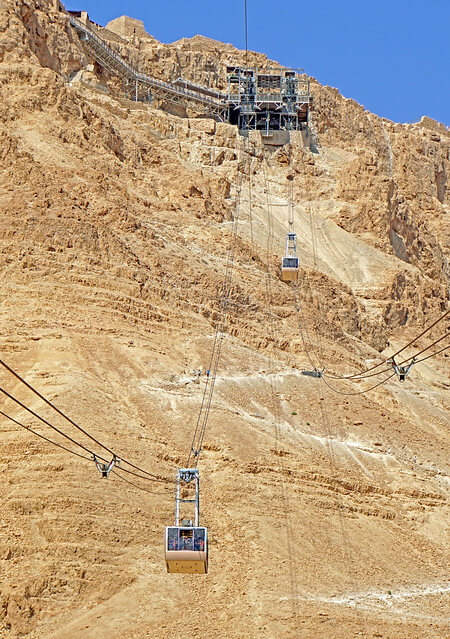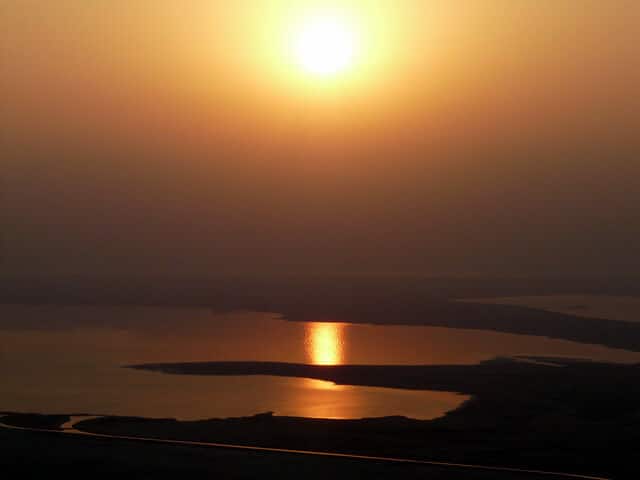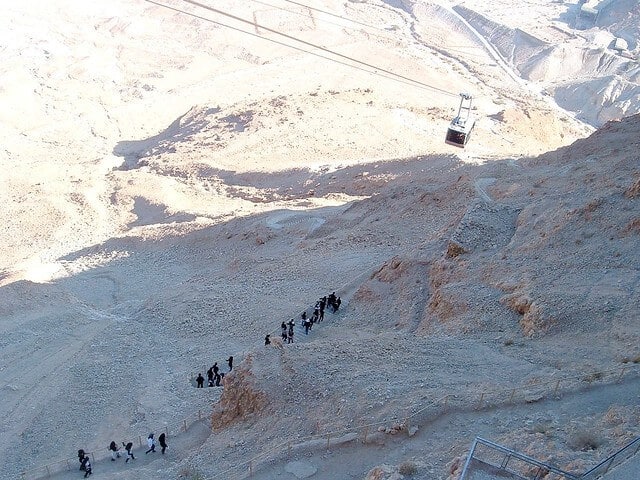Masada is an ancient fortress in Southern Israel. It’s located in the Judean Desert, overlooking the Dead Sea region and the Jordan-Israel border. The isolated rock plateau is famous for being the location of the last stand of the Jewish rebels as they tried valiantly to withstand the might of the Roman Empire.
Originally created by King Herod in the 37 BC, the fortification was used as a refuge point for the scattered Jewish zealots who were hounded by the Roman army following the sack of Jerusalem and the destruction of the Temple.
In the first Century AD, The zealots managed to overcome the Roman garrison at Masada and used it as a basecamp to raid local villages and attack Roman garrisons. Eventually, after a lengthy Masada siege, the Romans overcame the zealots and they were massacred. According to Josephus, the zealots killed one another rather than surrender to the Romans.
The Masada Snake Path

Masada today is a popular tourist attraction. Each year, thousands of visitors ascend the mountain to learn more about the remarkable history of the fortress, examine the well-preserved isolated stronghold and take advantage of the sight’s incredible viewing points.
For those interested in a Masada tour, there are two options. Either the convenient and relaxing cable car to the top or the arduous and challenging Masada hike, known as the snake path or snake trail, one of the most well-known and popular hiking trails in Israel.
The snake path, located on the eastern side of the mountain is named for its steep elevation and winding track. The path takes you up 350 meters in altitude and is approximately 2KM long.
Climbing Masada
Due to the regions notoriously warm and humid climate, those who choose to hike up Masada tend to do so in the morning, or at sunrise. The incredible heat and the Masada elevation makes climbing at midday a nearly impossible task, and the path is officially closed at 10 AM for safety concerns.
The Masada temperature is generally far cooler in the morning and there are many Masada sunrise tours available for visitors. We recommend taking advantage of the many local hotels and hostels so you are ready to tackle the Masada sunrise hike at dawn.

Be warned, there are parts of the snake path that don’t have railings or safeguards so it’s important to stick with your group and tour guide who can provide warnings and additional safety recommendations.
The snake path is open daily from an hour before sunrise until 10 AM. It costs 29 NIS to climb the path. Seasoned hikers can climb the path in around an hour. For beginners and slower walkers, it will take around two hours or longer to climb the path so be sure to get there well before sunrise to avoid the heat.
Other options for climbing Masada
In addition to the snake path, there is also a cable car option for ascending the mountain. The cable car route is of course far easier, but also more expensive. A return cable car ticket costs 76NIS.
At the entrance, visitors can enjoy the Visitor Center, which houses a food court, and a museum which showcases various artifacts discovered in the fortress.
The cable car is open between 8 am and 4 pm in the winter, and 5 pm during the summer and is suitable for wheelchairs and people with disabilities..
What should you bring with?
The most important item to bring is water and plenty of it! The temperature at Masada can exceed 40 degrees Celsius in the summer, and dehydration is a genuine concern.
Also, make sure to bring sunscreen and a summer hat so you don’t get burnt. For those tackling the snake path, we recommend bringing a flashlight to help navigate the winding trail at dawn, as well as additional layers of clothing and comfortable nonslippery shoes.





